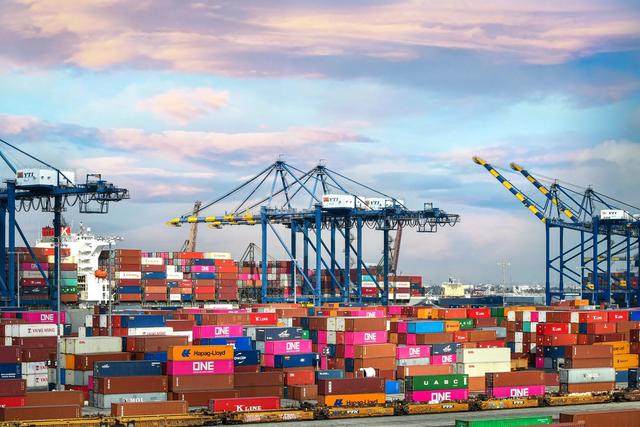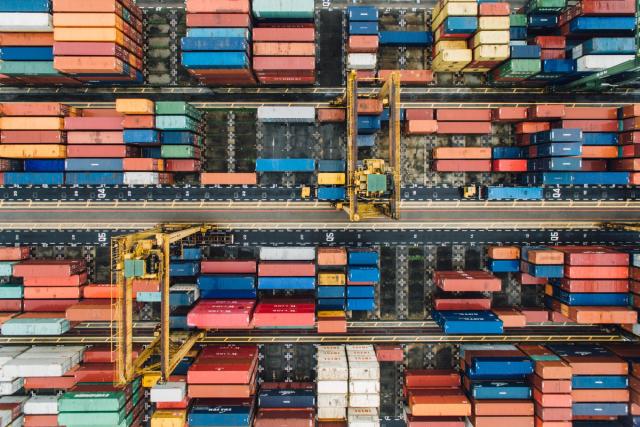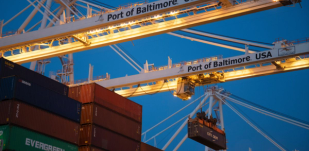Three Years On from Brexit: What’s Happened So Far and What to Expect for Businesses Conducting International Trade
Britain exited the EU on 31 January 2020 - although the Withdrawal Agreement did not take effect for another 11 months - with parties and protests held in equal measure and a clock counting down to the momentous occasion projected onto Downing Street. Three years on from the big day, which erstwhile Prime Minister Boris Johnson hailed as a moment of true national renewal, the mood was reflective.
Hopes of renewal quickly gave way to political mayhem and economic calamity in the wake of Brexit and the pandemic - leaving the nation asking: “what has happened since we left the European Union (EU) and how is it impacting us?”
This question is particularly pertinent for small and medium-sized enterprises (SMEs) with an international footprint, for which cross-border trade is their lifeblood. The EU, taken as a whole, is Britain's largest trading partner - a relationship that has been completely reshaped by Brexit.
To mark Brexit’s third anniversary, let’s shed some light on what’s happened to Britain since the nation departed the EU and what to expect going forward from a trade and currency perspective.
Key Events Since Brexit
The post-Brexit timeline begins less than two months before Covid-19 blindsided society in March 2020. While there is an interplay between the pandemic and Brexit - notably in supply chains - it is political events that have dominated Brexit news in recent times.
The EU-UK trade agreement
On Christmas Eve 2020 - just days before Britain would depart the EU's single market and customs union - the two sides finally struck a last-minute deal on post-Brexit trade and future EU-UK relations.
The deal - known officially as The Trade and Co-operation Agreement - allows for tariff-free, quota-free access to each other's markets for goods, but not services, and covers future competition, fishing rights, and cooperation on matters like security. It was officially ratified by the European Parliament in April 2021 having been in place provisionally since January.
Despite this, relations have been tense, with both sides clashing over key issues like fishing, diplomatic representation, and new arrangements for Northern Ireland.
Other trade deals
Pre-Brexit, Britain was automatically part of any trade deal the EU had negotiated with another country. Its departure from the bloc has forced the government to sharpen its diplomacy skills and negotiate new deals beyond European borders.
In total, 71 trade deals have been struck, although most are rollover deals that replicate agreements Britain had when it was part of the EU.
The government remains locked in negotiations with India and members of a trans-Pacific pact. However, trade deals with global economic heavyweights the US and China remain elusive.
Northern Ireland

Part of the Brexit deal, the Northern Ireland Protocol has been a bone of contention since it became part of international law at the start of 2021.
Pre-Brexit, the transportation of goods across the Irish land border was straightforward because both sides adhered to the same EU rules. Post-Brexit, however, special trading arrangements were required because Northern Ireland has a land border with the Republic of Ireland, which is a member of the EU. The EU requires strict border checks when certain goods - such as milk and eggs - arrive from non-EU countries.
Tensions have arisen over the protocol, which essentially establishes a trade border between Northern Ireland and the rest of the UK. The new barrier has disrupted supplies from Britain, causing anger amongst certain communities north of the border. Grace periods on the implementation of border checks on goods travelling to Northern Ireland have since been prolonged indefinitely.
Media reports released around the Brexit anniversary suggest both parties have struck a customs deal that could help end the dispute over Northern Ireland. According to the reports, the EU has provisionally accepted a plan that would abolish the need for routine checks on products going into Northern Ireland.
Political Instability
Political turmoil in Westminster in 2022 saw a conveyor belt of Prime Ministers and Finance Ministers come and go from 10 Downing Street during a four-month period - three PMs and four chancellors to be precise.
Rishi Sunak - a longtime supporter of leaving the EU - is the latest to take the helm of the good ship of Brexit. He inherits a vessel that has been steered on different courses and subsequently lacks direction - from Theresa May who tried soft Brexit plus austerity, to Boris Johnson who tried hard Brexit plus fiscal expansion, to Liz Truss who tried hard Brexit plus fiscal expansion.
He will be acutely aware that the ramifications of leaving the EU, long suppressed by the pandemic, are only now beginning to be felt by voters and businesses at large - and it's up to him to provide some stability and direction.
How Has UK Trade with Europe Been Impacted Since Brexit?
When the UK finally departed the single market and customs union in 2021 - five years after the Brexit vote - businesses trading with the EU suddenly faced new rules, new paperwork, and new checks on some goods. So, how has this upheaval impacted trade between the UK and its nearest trading partner - which amounted to £550 billion before ties were severed - as businesses grapple with the red tape?
Evidence that there was an initial dip in the UK’s trade with the EU has emerged: EU data shows that exports to the bloc fell by nearly 14% in 2021 compared with 2020. Let’s delve deeper and explore the extent of the impact on specific industries:
Agriculture

Brexit, the government said, was about giving farmers “for the first time in 50 years the chance to do things differently”.
Having lost unfettered access to their nearest export market, the reality looks a lot different for British farmers: they face reductions in farm subsidies following the loss of the common agricultural policy (CAP); they have been hamstrung by trade deals providing access to the UK market to rival farmers from Australia and New Zealand; and trade in agricultural products with the EU has reduced dramatically amid Brexit barriers that many in the industry believe add little gain.
This is being compounded by the end of the free movement of labour, making it easier to import some produce because of strict limits on the number of seasonal workers from the EU.
Manufacturing

The UK manufacturing sector has been particularly hard hit by Brexit bureaucracy and soaring transportation costs that have strangled imports and exports.
According to the Office for National Statistics, goods exported between the UK and the EU fell by a whopping 40.7% in January 2021 - the first month after Britain departed the bloc's single market and customs union - and imports fell by 28.8%. This represented the largest month-on-month drop since records began.
Lingering Brexit complications - notably customs delays and reams of red tape from new rules - are still rippling throughout the industry, forcing manufacturers to implement contingency plans. According to a survey by Make UK - the manufacturers’ trade group - many companies are bringing back production to the UK to try to address the supply chain mayhem caused by the pandemic and Brexit: three-quarters of companies have increased the number of their British suppliers and almost half of the companies said they intend to increase their UK supply base.
Shipping

Shipping statistics from the Department for Transport for the first quarter of 2021 outline the chastening blow Brexit and the pandemic dealt British ports: compared to the same period in 2020, total freight tonnage fell by 9%, while traffic decreased by 13% - inward units were hit hardest with a 17% fall.
If we compare July to September 2022 with July to September 2021 through major UK ports, the tide appears to be turning amid stockpiling, compliance with paperwork, and collaboration from the French authorities:
- Total freight tonnage increased by 1% to 111.6 million tonnes
- Inward tonnage increased by 4% to 74.2 million tonnes
- Outward tonnage decreased by 3% to 37.4 million tonnes
- Total volume of unitised traffic increased by 16% to 5.8 million units
- Inward units increased by 16% to 3.1 million units
- Outward units increased by 15% to 2.7 million units
Fashion and textiles

The volume of textile goods traded between the EU and the UK crumbled post-Brexit, resulting in losses for companies that rely on international trade. Fashion and textiles industry trade data from January to September 2021 shows imports fell by 44% to almost €2 billion and exports by 22% to €1.6 billion. Despite these alarming figures, the UK continues to be the most important export market for EU textiles and clothing.
On the UK side, things remain complicated, with Brexit aftershocks causing fashion companies to re-evaluate their operations in 2022. According to the Retail X Fashion Sector Report 2022:
- 25% of fashion retailers were considering relocating some or all of their operations elsewhere in the EU to make logistics, staffing, and manufacturing easier.
- 39% would move to the EU if they were offered tax advantages.
- 91% wanted a visa scheme to make it easier for creatives to operate across the UK and EU.
What Has Happened to the Pound Since Brexit?
When the clock struck midnight on 1 January 2021 - and the Withdrawal Agreement became fully operational - the pandemic-ravaged pound was approximately 15% weaker against the euro than it was on the eve of the Brexit referendum in June 2016. After dipping to 1.1474 in April, it managed to move into a trading range between 1.16 and 1.18 for the rest of the year.
Head of Corporate Trading for Clear Treasury, Reece Dye, explains; “The GBP/EUR pair was buffeted by a raft of political and economic forces in 2022: Bank of England interest rate hikes, Russia’s invasion of Ukraine and a disastrous mini-budget.”
The pair hit a high of 1.21 in February and slid to an intraday low of 1.08 in September, before partially recovering the losses caused by the Liz Truss administration.
Reece Dye goes on to further point out; “The lack of appetite for the pound has resulted in trading being fairly muted, with GBP/EUR trading sideways between the 1.11 and 1.1450 handle so far in 2023 - the turbulence and uncertainty will remain as the BoE continues to grapple with inflation, UK households battle with surging energy costs and GDP struggles to advance.”
Finally, Reece Dye, expands that “Economic data and monetary policy will drive the volatility in the pound for the foreseeable future, whilst it still remains unclear the full ramifications of Brexit to UK productivity. The enhanced volatility in Sterling since 2016 highlights both the opportunities and challenges when managing a businesses exposure to exchange rates.”
What Impacts Have There Been on Cross-Border Payments Since Brexit?
The far-reaching impact of Brexit is being felt by corporate treasury departments, which are wrestling with new regulations and operating in a more complex European payments landscape. These friction-inducing changes include:
- IBAN discrimination: In a breach of EPC SEPA regulations, some companies have refused to accept SEPA payments and direct debit set-ups from GB IBANS.
- Additional third-party bank charges: Some European banks now treat SEPA transactions between the UK and EU as cross-border payments from a fee perspective, resulting in additional charges.
- Additional data requirements under the Funds Transfer Regulation: There is now a requirement for additional payee information when making transactions between the UK and EU: full payer address, official personal document number, customer identification number, or date and place of birth.
To mitigate these challenges, SMEs are embracing fintech providers that specialise in international payments. Their technology-led approach to overseas transactions removes the friction from peer-to-peer transfers and reduces the cost.
What Does the Future Hold for UK Trade with Europe?

Much remains to be settled from a trade perspective post-Brexit: the Northern Ireland protocol, trade agreements, permanent arrangements for key industries like financial services, and ways to reduce red tape. There are potential gains for UK businesses provided the UK government reinforces future trade with robust political and economic strategy - but it may take some time to realise them.
For example, in 2012, the government pledged to reach £1 trillion of exports by 2020. Six chancellors and four prime ministers later, the Office for Budget Responsibility expects the target will be reached 15 years late. According to the Federation of Small Businesses, however, alterations to trade policy, such as changes to UK-EU trading terms, could help the government to hit the revised 2030 target provided by Boris Johnson in 2021.
The government hopes to make progress on the India and US trade deals in 2023. Much will depend on US president Joe Biden's planned visit to the UK later this year to mark the 25th anniversary of the Good Friday agreement - bringing the Northern Ireland protocol into sharp focus.
Key Takeaways
The need for SMEs to manage FX risk in a volatile economic environment has been amplified by the suffocating effect of Brexit on UK trade with the EU. This industry-wide symptom of severed ties and new deals has arrested the control businesses have over their imports and exports amid reams of red tape - driving up costs and restricting access to key markets and suppliers.
One thing your business can control during these turbulent times is the cost of making international payments. This demands a proactive approach to managing currency risk that provides you with the foresight to prevent fluctuating exchange rates from inflating the cost of your payments – and denting your bottom line.
Make International Payments with Clear Treasury
Clear Treasury specialises in providing businesses across industries with clarity on the tools available to mitigate their exposure to currency risk. Exchanging money into another currency and transferring it overseas can be daunting and confusing. Aware of this, we use our knowledge and experience to cut through the jargon and provide you with a friendly and personal service.
When you become one of our valued clients you will be assigned a personal account manager. In addition to helping you benefit from quick, easy, and secure transfers, they can outline the tools available to help mitigate the impact of currency risk on your international payments, including forward contracts and stop losses.
Open your free Clear Treasury account today for quick, secure, and cost-effective international currency transfers.
Related Articles
Trends in the Fashion and Textiles Industry 2023
Last year, fashion businesses juggled post-Covid operations with the knock-on effects of Brexit, inflation, rising energy costs and the Russia-Ukraine war. Supply chains were disrupted by the rocketing cost of raw materials, increase in shipping costs and port delays, which are all expected to continue into 2023.
Read more
Trends in the Shipping Industry 2023
After enjoying a boom during the later stages of the Covid-19 emergency, current prices for container shipping have fallen back to pre-pandemic levels, with rates to ship a 40ft container from Asia to the US West Coast falling by more than 80% since the end of April.
Read more
Trends in the Agriculture Industry 2023
There’s no doubt that 2022 was an unsettling year for farmers. As the agriculture industry slowly recovered from the Covid-19 pandemic, it encountered a heatwave and drought, a major bird flu outbreak, and raging field fires.
Read more


